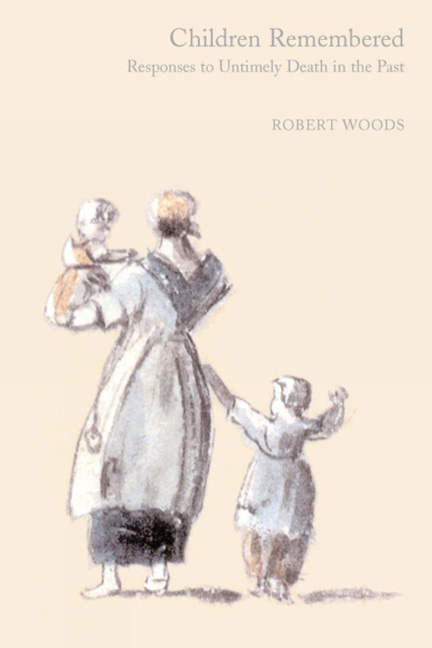Book contents
- Frontmatter
- Dedication
- Contents
- List of Tables
- List of Figures
- List of Illustrations
- 1 Introduction: ‘the lines of life’
- 2 Après la mort des enfants
- 3 Mortality, Childcare and Mourning
- 4 Children in Pictures and Monuments
- 5 Emotions and Literature
- 6 Poems, Mainly of Child Loss
- 7 The Vocabulary of Grief
- 8 Parallel Histories: Experience and Expression
- Acknowledgements
- Notes on the Sixty-Nine Poems
- Notes
- Select Bibliography
- Index
8 - Parallel Histories: Experience and Expression
- Frontmatter
- Dedication
- Contents
- List of Tables
- List of Figures
- List of Illustrations
- 1 Introduction: ‘the lines of life’
- 2 Après la mort des enfants
- 3 Mortality, Childcare and Mourning
- 4 Children in Pictures and Monuments
- 5 Emotions and Literature
- 6 Poems, Mainly of Child Loss
- 7 The Vocabulary of Grief
- 8 Parallel Histories: Experience and Expression
- Acknowledgements
- Notes on the Sixty-Nine Poems
- Notes
- Select Bibliography
- Index
Summary
It has been said on several occasions that this study has been an experiment. Has it been successful? There are several reasons for optimism. First, it has proved possible to chart the risks of life and death in France and England as they affected infants, children and mothers, and to do this in such a way that differences between the two societies become obvious. This has not been a relatively simple task. It rests upon the cumulative findings of generations of historical demographers, not to mention a number of assumptions about the quality of statistical data and the justification for joining together estimates from different sources. What we have as a result is the pattern of level and trend that, although complete representation cannot be claimed, is at least based on large samples. It is as close as we are likely to come to describing the generality of mortality experience in the past. During the early modern period, the age of contention for family historians, it is possible that in France 50 per cent of infants did not survive to their tenth birthday while in England it is likely that the equivalent figure was 30 to 35 per cent. Half or a third would meet an untimely death. If we compare these proportions with the experience of those ten individuals for whom we have shown birth histories, then 40 per cent would be closer to the mark. These were certainly high levels of mortality, a point which table 8.1 brings home even more effectively than say figure 3.7 (p. 48), but they were neither uniform nor constant.
Secondly, since very few paintings of dead children were completed, and even fewer have survived, we are obliged to use visual evidence on the presence of children rather than their absence. Although children were placed in English church funeral monuments, it is very unusual for them to be given individual status before the nineteenth century. N is the outstanding first example. The small gallery of portraits displayed in Chapter 4 or included in table 4.1 (p. 68) can be used to tell a story about parental attitudes, but it is not a simple story in which there are pivotal works or key turning points.
- Type
- Chapter
- Information
- Children RememberedResponses to Untimely Death in the Past, pp. 209 - 216Publisher: Liverpool University PressPrint publication year: 2006

